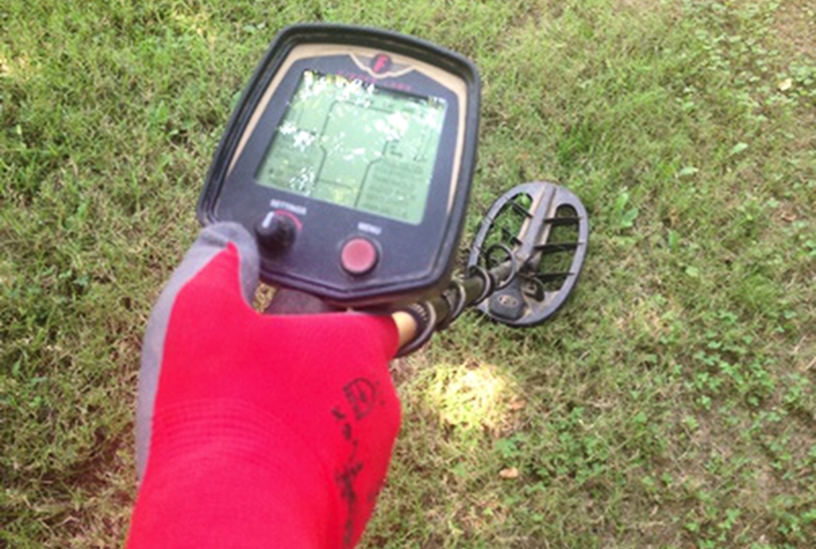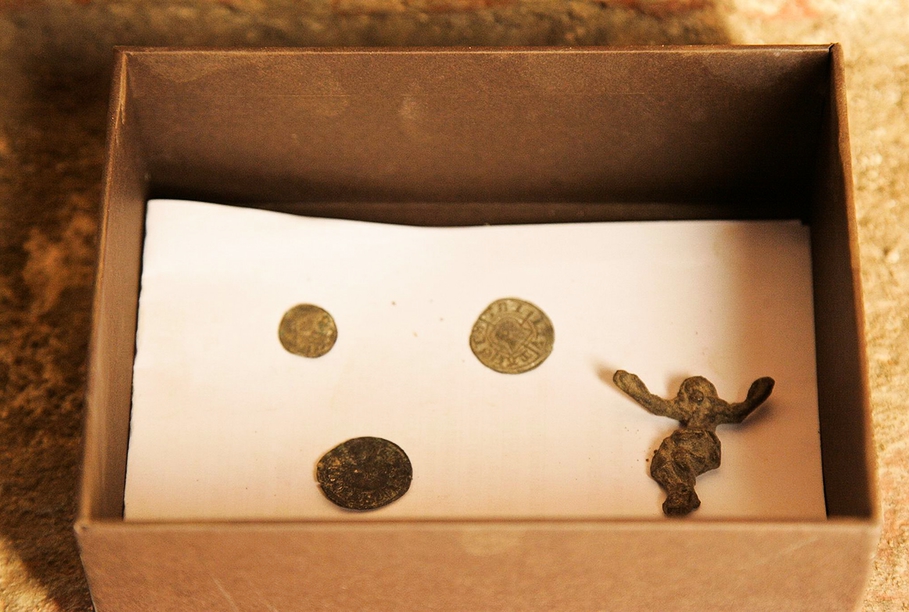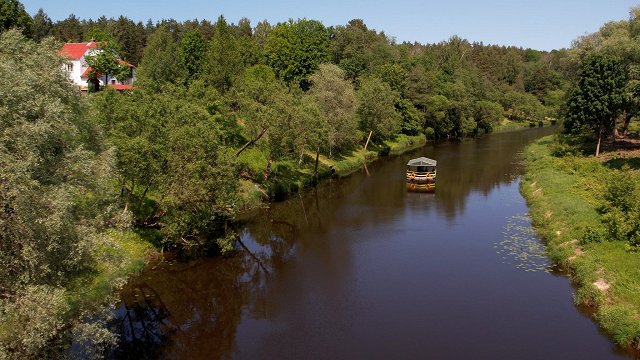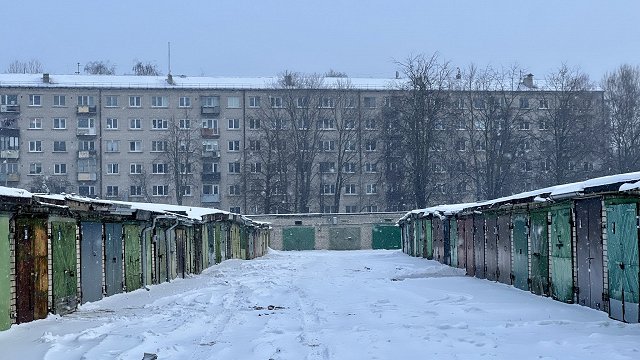Latvian Radio’s youth channel Pieci.lv looked into the scourge of ‘black archaeology’, the term given to the illegal digging and plundering of historic burial grounds and cemeteries for priceless artifacts.
The ‘diggers’, as they are known in popular jargon, come into the woods, meadows and shores of Latvia armed with metal detectors and shovels, leaving behind them a marred landscape of holes in the ground, piles of disturbed soil and their trash.
The issue has been receiving increased public attention since January, when ancient Latgallian and Viking burial grounds were desecrated by black archaeologists working in the dead of night at the remote wooded digs otherwise known only to local historians. Diggers are suspected of being to blame for the plundering, as for many of them this isn’t just a spare time hobby but actually an illegal business pursuit.
There are in fact many Latvian-based accounts on the online auction site eBay which offer silver coins, ancient ornaments, bronze tools and spearheads. Perusing the more active accounts gives one the impression that the sellers are dealing in several thousand euros per month.
To try to learn more about the actual community of diggers in Latvia, Rūdolfs Krieviņš of Pieci.lv got in touch with the Latvian Historical Research Club, some of whose members are active seekers of various historical artifacts, and visited them at the abandoned German soldiers’ cemetery in the woods between Riga’s southwest suburbs of Ķekava and Baldone last week.
Jānis has been a digger for a few years already and explained that legislation regarding the looting of archeological sites is in disarray.
“The biggest problem is the mess in the laws. As far as I understand, nobody is allowed to keep anything for themselves really. It’s not clearly defined what you have to hand over, whom you must notify, how you report it, who inspects it and how,” he complained on his way to meet four other members of the Club.
After scrambling through overgrown brambles and bushes past two half-collapsed buildings they reached the otherwise all-but-forgotten site of the German soldiers’ cemetery. It actually still looks a bit like a war-zone, with craters dug up all around and left unfilled, thus leaving behind a devastating and disorderly sight.
One of the pits is over a meter deep and littered with soda bottles and various fragments of scrap metal. Such scenes are said to be a normal thing around Ķekava, where locals would rather see the diggers take some care to refill the holes and level out the ground afterwards. A digger had apparently found an unexploded shell, leaving it by the ditch, presumably not an explosive hazard without its detonator unless disturbed. The history club members left it alone.
Later the group arrived at another similar site in the woods nearby with lots of unfilled ditches. This is an unmarked graveyard of unknown soldiers recently discovered, holding the remains of more than 120 fallen men, buried four or five per grave. Historians believe the soldiers may be Latvian riflemen and Russian soldiers, possibly from a Siberian regiment.
Club members have notified the national Committee for Veterans’ Cemeteries about the site, as it is responsible for the registration and protection of such sites. A few hundred meters away are more ditches dug up in an area that clearly was a once a battleground. Here the diggers pulled out their metal detectors and got to work.
The detectors beeped and blipped the whole time as the diggers picked up shell fragments and other metal objects by the dozens. After about a half-hour they had collected some intact shells and bullets, as well as a metal identification tag. They claim other diggers have been so thorough in their work that little remains to be uncovered. When asked why the actual gravesites had been dug up, they said one likely problem is that they were unmarked, so that nobody knew they were there.
“I’m walking along the overgrowth, my detector gets a signal and I start digging. If bones appear, then it’s vandalism, like what happened in Latgale. But if I come into an area and see that there is a fence and an informative notice about the existing graves, I don’t even set foot in there. But out there in the middle of the woods of Latgale it turns out there are ancient burial grounds. How am I supposed to know that?,” one of the diggers asked.
However, Archeology and History Department head Sandra Zirne of the State Cultural Monument Protection Authority (VKPAI) doesn’t believe making such sites public is always the best answer.
“This is a double-edged sword. We can put up signs, but for some that will be a guide to where they can find things, while for the rest it’ll be what must be preserved. Archeologists also complain that we don’t label these sites more. But now the places we’ve labeled have been dug up and looted,” she explained.
Though the Latvian Historical Researchers’ Club members have certificates of affirmation that they are not ‘black archaeologists’ involved in illegal business, but genuine hobbyists, everyone is equal before the law.
“We’re all black diggers, whether club members or not. But why? Where are the ‘white diggers’? We’re all put into the same bag, whether you fill the ditch back up again or not. You’re digging up ancient graveyards and war zones and stealing coins,” one club member said.
This is quite true, as the law states that it is prohibited to use metal detectors near cultural-historical monuments or on the property of persons who have not granted permission. The law also states that any archaeological objects found in or on the ground or under water that date from before the 17th century, belong to the state and must be stored by museums.
This means that a digger is obliged to report all findings immediately to the VKPAI. If not, the person comes under criminal liability to recompense the cultural-historical environment they have damaged.
So this doesn’t mean it’s completely forbidden to dig. It is allowed, but only if one has taken care of all the mandatory formalities.
“Not at the sites of official archaeological monuments, no. There you must have a permit from the VKPAI. We only have so many of these archaeological monuments. It’s a finite legacy, a research resource. All of us own some land somewhere. Rarely is there a land trust or state preserve established, and then you must turn to its authority and get their permission for whatever it is you want to do on this land,” the VKPAI head inspector clarified.
The losses of these cultural-historical treasures are incalculable, she said, but added that the recent looting of the sites in Latgale could have cost society an estimated million euros. She believes the diggers’ hobby needs to be limited further, as the law lacks teeth now to pursue the culprits sufficiently. The VKPAI also lacks funding to set up working groups that could address the issue.
“We have a small staff,” the VKPAI department head explained. “We’d have to create a whole new department and hire the people who could do the paid control work. But there are already several thousand metal detectors in active use throughout the country. So we have the pursuit of these unscrupulous hobbyists being covered by taxpayers, an additional burden on the whole financing system,” Zirne said.
A new law is currently being drafted, which will provide for harsher punishments for those using metal detectors illegally. Since the looting of the ancient burial grounds in Latgale, the police are also paying more attention to the problem.



































